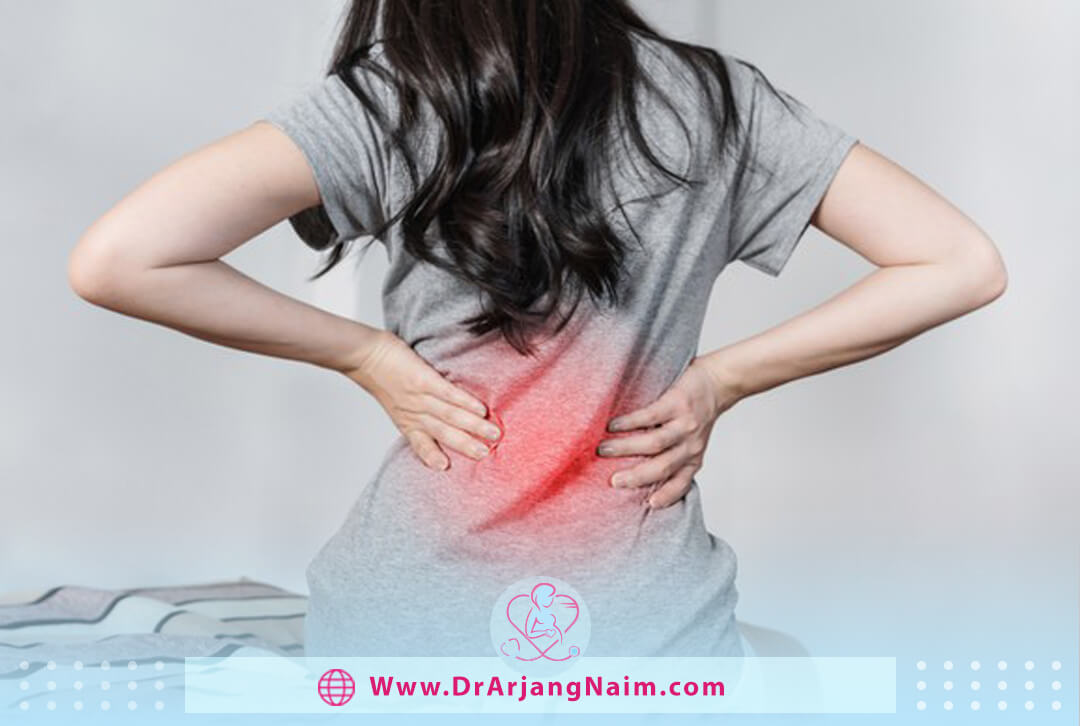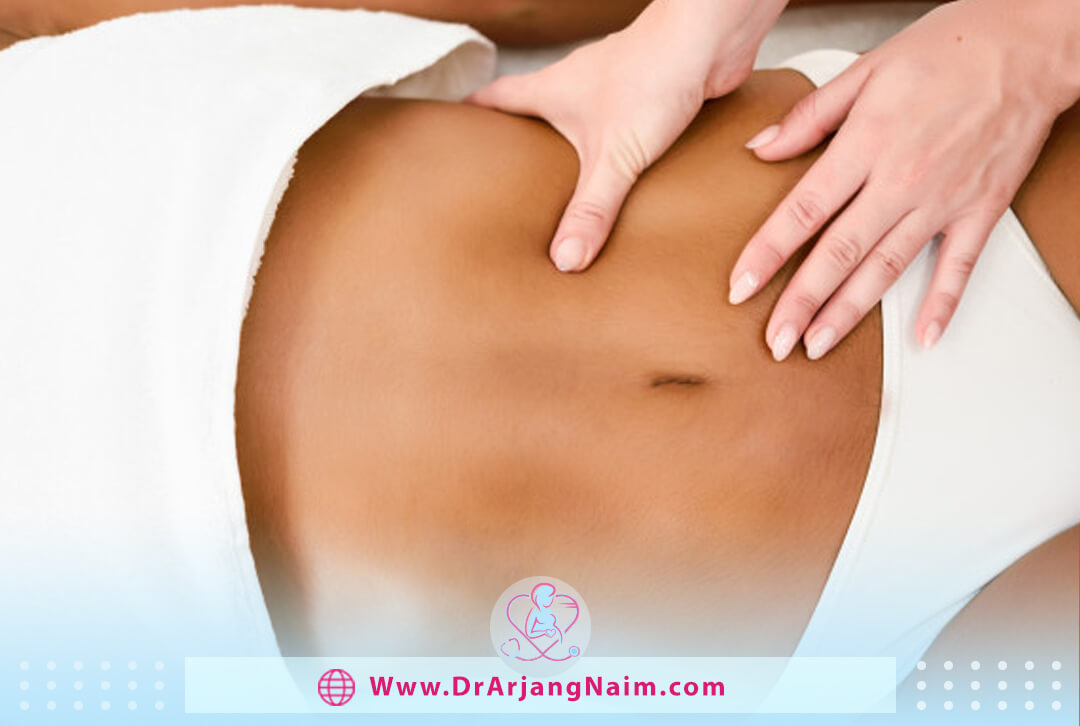Diastasis Recti is a common condition in pregnancy that affects approximately 30% of women, in which case the abdominal muscles dilate and cause the stomach to bulge. In many cases, abdominal Separation resolves independently, but knowing information about it helps improve and not make it worse.
What is diastasis recti?
Diastasis recti is a partial or complete separation of the right abdominal muscle or the six-piece muscles that line the stomach’s midline. Diastasis recti are very common during and after pregnancy because the uterus stretches the abdominal muscles so the baby has enough space to grow. Of course, this condition is not limited to pregnancy and can happen to other people, such as babies and men. Diastasis recti heal naturally after delivery, usually between the first day and eight weeks after birth.
It is normal to have a separation between the abdominal rectus muscles. In women who have not given birth, it is normal for 1 cm (or one finger) to separate at the abdominal button level and 0.5 cm from above and below. After pregnancy, it is normal for the Separation to be 1.5 to 2 cm at the belly button level. Separation, more than 2.7 cm at the belly button level, is usually considered pathological.
Most women with right diastasis notice a bulge between their abdominal muscles as they try to sit or lift their baby. By contracting their abdomen, they may also feel the Separation between the muscles in the midline more than two fingers wide.
Symptoms

The most common sign of diastasis is a bulge in the stomach, especially when you squeeze or contract the abdominal muscles. Other symptoms include:
- Lower back pain
- Poor posture
- Constipation
- Bloating
- Difficulty lifting objects
- Difficulty performing routine tasks
During pregnancy, the abdominal muscles separate and may not have significant symptoms. But in the second or third trimester, a bulge is visible in the abdomen that can appear at the top and bottom of the belly button. It will get more attention when you want to use your abdominal muscles to stand, sit or lie down. See a doctor immediately if you have severe abdominal, back, or pelvic pain during pregnancy.
After childbirth, the most obvious sign is a bulge in the abdomen. It may even show that women are still pregnant. To check if you have Diastasis Recti, Lie on your back legs bent, feet flat on the floor. Lift shoulders slightly off the ground, support the head with one hand, and look at the abdomen. Move another hand up and down the belly button and along the middle abdominal muscles. See if you can put your fingers in the gap between the muscles.
If you feel a gap or separation of one to two fingers in length, there is probably a moderate case of diastasis. After a few weeks after delivery, the distance decreases as the muscles gain strength.
Causes
Excessive intra-abdominal pressure causes diastasis. During pregnancy, the uterus’s abdominal muscles and connective tissues expand, with the pregnancy hormones relaxin and estrogen. Pressing on the abdomen during labor can also lead to diastasis.
Newborns are sometimes born with diastasis, especially if they are premature. This is because their abdominal muscles are not fully developed or connected. These conditions usually improve over time.
Diagnosis
An OB/GYN or physical therapist can diagnose diastasis recti during the examination. Also, ultrasound or CT scans are used to help with the diagnosis.
Dos and Don’ts
Some conditions can make diastasis Recti worse or better.
Don’t strain
Applying pressure will make things worse. Constipation and lifting heavy objects such as children strain connective tissue. Standing and sitting for a long time is like lifting heavy objects because they support the body’s weight. Vaginal pressure should be applied during labor, but if not applied incorrectly, it will put a lot of pressure on the weak abdominal tissue.
Avoid straining on the toilet and severe coughing if the abdominal muscles are not supported.
Careful with exercise
Some common fitness exercises worsen abdominal separation, such as pushing something, doing yoga, swimming, etc. Therefore, be sure to consult a specialist to perform sports movements.
Conservative management of the separation

The first-line treatment is specific exercise exercises directed by a physiotherapist or health care professional familiar with Diastasis Recti Abdominis. These exercises strengthen the deep core muscles, such as the transverse muscles of the abdomen and pelvic floor. If poor abdominal exercises are performed, they can increase intra-abdominal pressure, resulting in re-separation and the formation of bulges and hernias.
That is why it is essential to check for Diastasis Recti Abdominis and hernia before prescribing abdominal exercises. Improper abdominal exercises, including lying down, standing up straight, some Pilates exercises, and especially torso rotation activities, can overstimulate the abdomen. Weakness in the core muscles leads to insufficient closure of the sacroiliac joint, leading to pelvic instability and back pain.
At worst, this re-separation can lead to a hernia. Therefore, when diastasis is detected, the female patient is asked to book an initial appointment with a physiotherapist between 2 and 3 weeks after delivery. Follow-up visits are done at 2, 3, or 4-week intervals depending on the following:
- The condition of the patient’s abdominal musculature
- The ability of the patient to comprehend the exercise program
- The compliance of the patient to follow through
At the initial visit, the patient is given instructions that include:
- Correct body mechanics
- Proper posture
- Appropriate diastasis recti exercise to activate the abdominal musculature
- Appropriate exercises to re-approximate the recti bellies without increasing intra-abdominal pressure
At each subsequent visit, the patient is instructed to include the following:
- Retrain the concentric and eccentric control of the abdominal musculature
- Simulate the functional role of the abdominal musculature in trunk stabilization
Subsequent visits will also provide recommendations on physical activity and exercise at home and in the community. Abdominal splints may help in some cases and improve when diastasis is closed or stacked.
Prognosis
The patient is doing well in treatment. In most cases, rectal diastasis usually resolves independently from 6 weeks to 3 months postpartum. However, it may continue for a long time after delivery. If Diastasis Recti Abdominis does not improve, more interventions may be needed. Special exercise therapy may help improve the condition. An umbilical hernia may occur in some cases, and surgery may be required if there is pain. In general, complications occur only if a hernia develops.
The bottom line
The postpartum period is often physically and mentally exhausting, especially if experiencing pregnancy or childbirth complications. That is why the mother needs to take time to take care of herself, and it is also necessary to seek help from those around her in this situation. Although Diastasis recti are common and treatable, it does not go away easily.
Talking to a doctor about concerns can lead to a thorough examination, a correct diagnosis, and a visit to a physical therapist who can design a treatment plan to feel stronger and more confident about the postpartum body.
Dr. Arjang Naim, MD, listens to the mother’s concerns with complete calm during the postpartum examinations, gives the necessary recommendations to improve the condition, and refers to other specialists for additional activities.
References
https://www.health-foundations.com/blog/diastastis-recti-everything-you-need-to-know
Additional questions
- What is the linea nigra?
It is a dark vertical line on the stomach’s skin during pregnancy, also called the pregnancy line.
2. When is it too late to fix diastasis recti?
Treating diastasis recti and restoring core strength and function with exercise is always possible.
3. What are the three muscles in the stomach?
- Transverses abdominis
- Rectus abdominis
- External oblique muscles
4. How long does it take to correct diastasis recti?
In most cases, diastasis recti usually resolve spontaneously within six weeks to 3 months postpartum.
- When do muscles relax during pregnancy?
Relaxin levels peak around 12 to 14 weeks of pregnancy. As the fetus grows in the womb, relaxin helps stretch the body.




